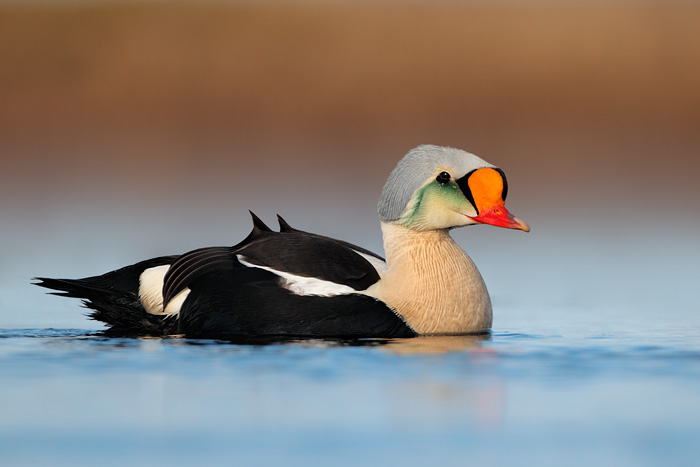
Somateria spectabilis
SUBFAMILY
Merginae
TAXONOMY
Anas spectabilis Linneaus, 1758, Canada, Sweden. Monotypic.
OTHER COMMON NAMES
French: Eider а tкte grise; German: Prachteiderente; Spanish:
Eider Real.
PHYSICAL CHARACTERISTICS
16.9–24.8 in (43–63 cm); 3.3–4.4 lb (1.50–2.01 kg). Male has
colorful blue, yellow, and white head.
DISTRIBUTION
Coasts of the Arctic. Winters off the coast of Iceland, Norway,
and Kuril and Aleutian Islands in the Old World, and as far
south as California and Long Island in the New world.
HABITAT
Open marine waters. Breeds on nearby land in Arctic freshwater
wetlands.
BEHAVIOR
Sometimes semi-colonial with the male guarding his mate. Migratory.
FEEDING ECOLOGY AND DIET
Feeds mostly on marine invertebrates. Dives in deep water and
upends and head-dips in shallow water. Also eats the green
parts of tundra vegetation.
REPRODUCTIVE BIOLOGY
Seasonally monogamous until midincubation. Some forced
copulations occur. Breeding begins in Jun. Lays 4–5 eggs into
a deep depression on the ground with little nesting material;
incubation 22–24 days; becomes sexually mature at 3 years.
CONSERVATION STATUS
Not threatened. Common throughout its range. Has disappeared
from Kuril Island. Intense hunting pressure during migration
and possible oilspills during the nonbreeding season
may pose future threats.
SIGNIFICANCE TO HUMANS
Hunted for food and game.
Photo Gallery of - King eider
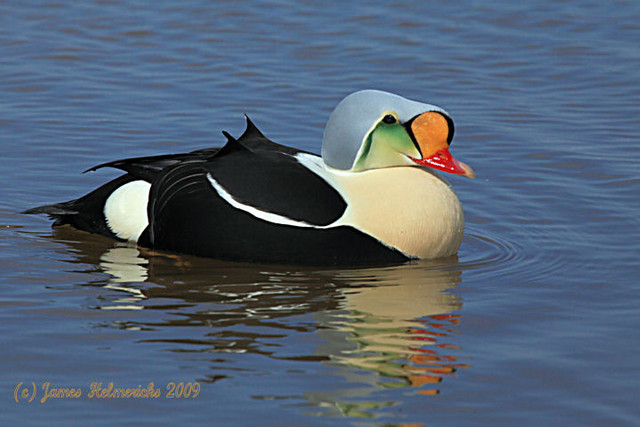
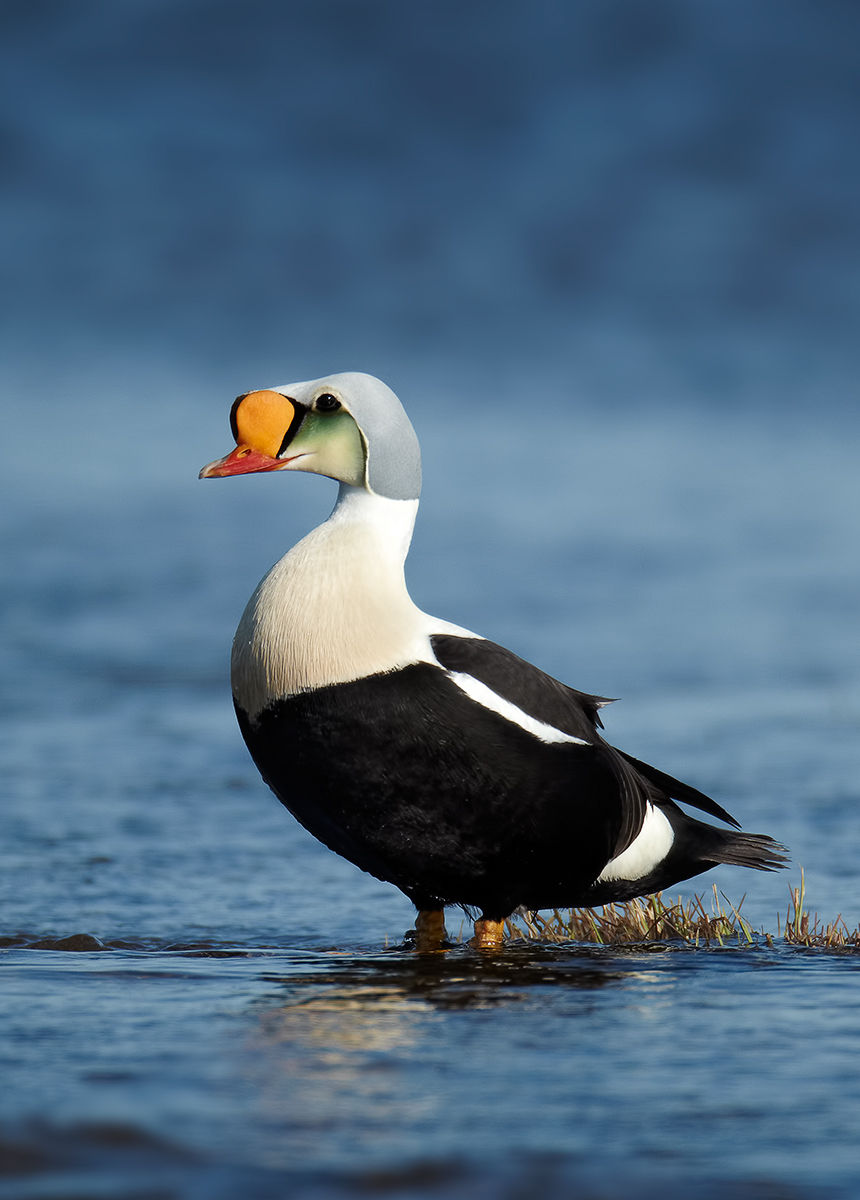
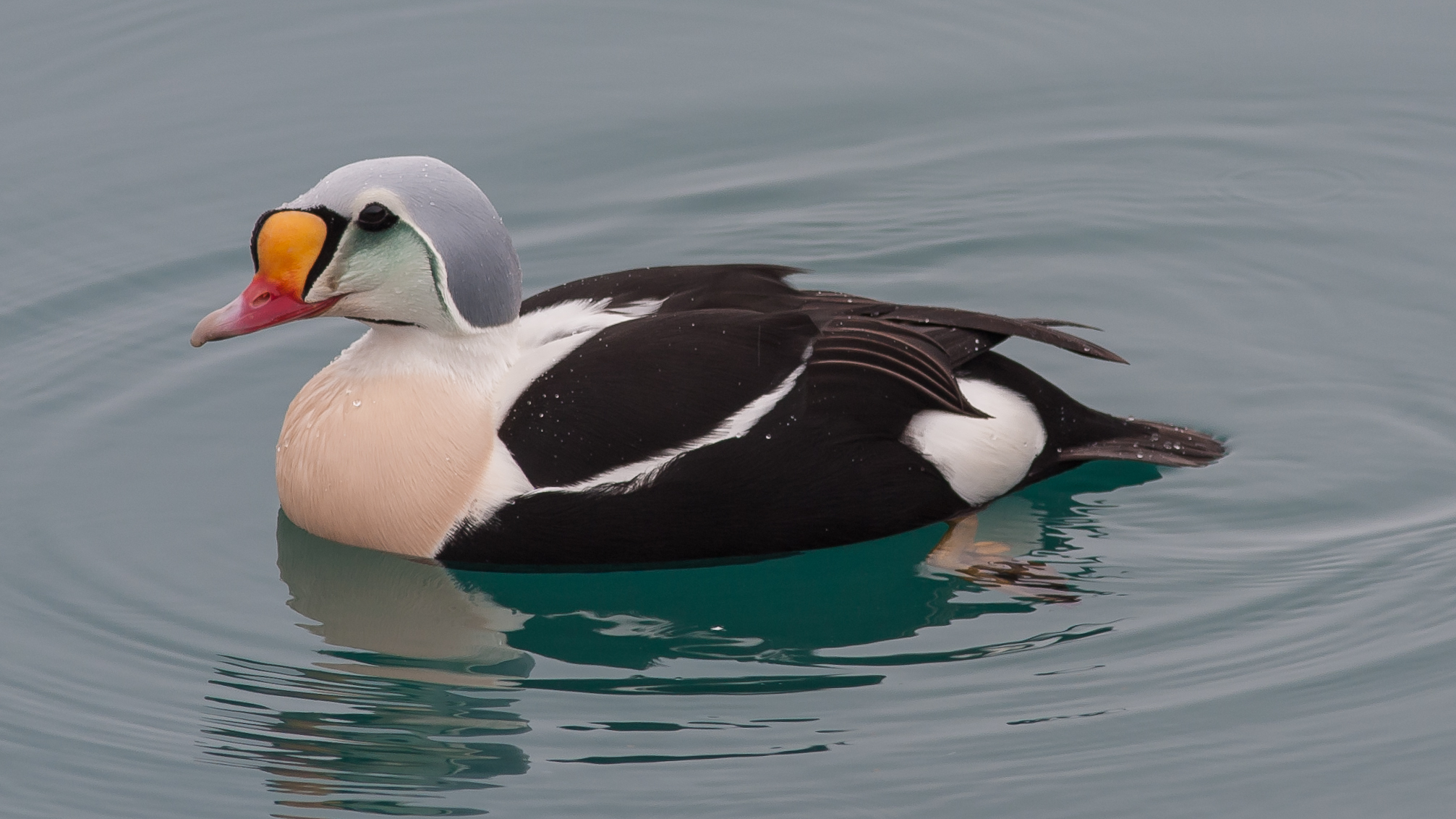
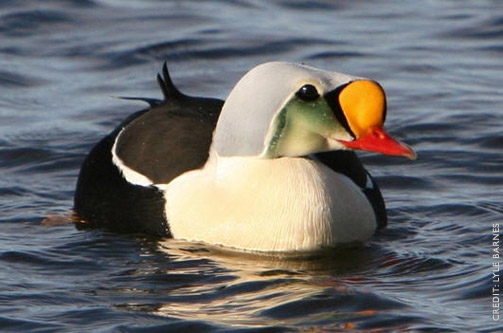
 Animalia Life
Animalia Life